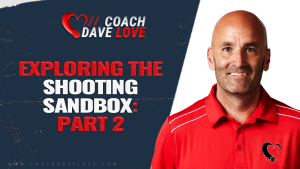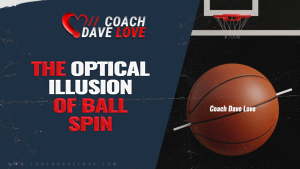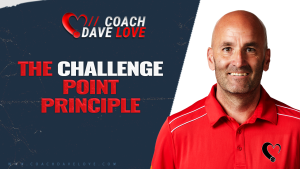Welcome to the sandbox—a simple yet expansive space where the skills of basketball shooting are both discovered and refined. In this blog, the sandbox is a metaphor representing the wide range of possible shooting techniques – a square space representing all combinations of habits that can result in a made shot. Much like children exploring different corners of a sandbox, basketball players navigate through their own unique set of motions, habits, and styles to find what works best for them. For the purpose of this blog, imagine their current shooting form as a spot in that sandbox.
At the heart of becoming skilled in basketball shooting is not just the ability to make a shot but to do so consistently under varying conditions and pressures. Here, we delve into what it means to be skilled, looking beyond mere accuracy and delving into the consistency and adaptability of shooting techniques.
In our sandbox, each theoretical player’s current shooting habits are marked by a dot—positioned uniquely for each individual. This of this dot as representing their default shooting form, or the shooting habits they have. For the purpose of this discuss, this dot is necessary only to visualize how close their form is to the traditional perception of ‘ideal’.
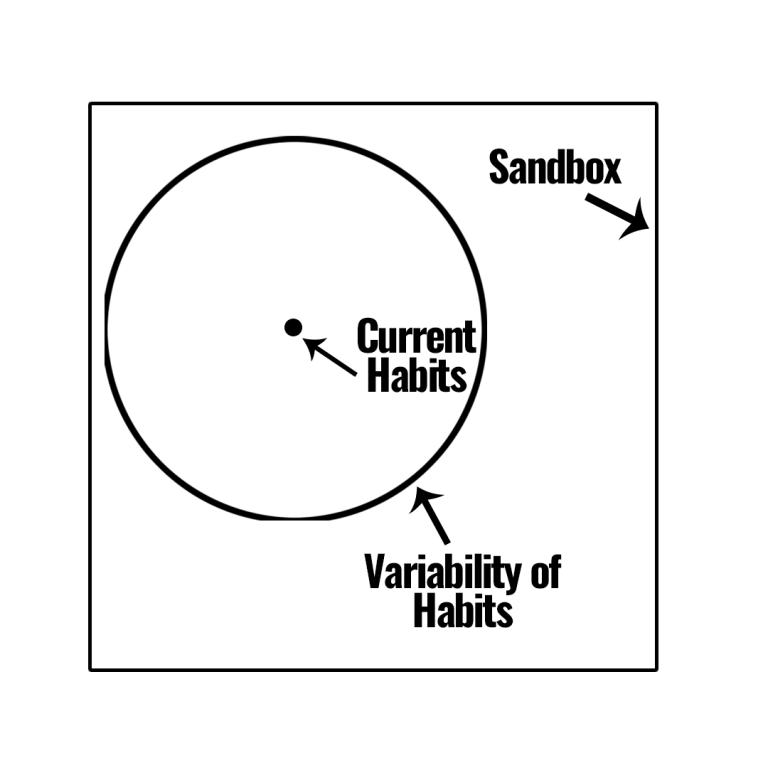
Surrounding this dot is a circle. This circle’s size is a testament to how consistently a player repeats their motions, with smaller circles denoting more consistency and bigger circles denoting more variability. It is common to view a skilled shooter as someone that repeats the same shooting form with remarkable consistency, therefore having a smaller circle.
Through this blog, we will explore these concepts, unraveling the intricacies of skill acquisition in the art of basketball shooting, and show how we view the definition of skill may be limiting players chances of achieve it.
Understanding Skill Limitations
Consider a player who struggles with their shooting technique. This player, whom we will refer to as Player A, exhibits a typical flat shooting trajectory and a hand position that often causes their shots to miss left. Within our sandbox analogy, imagine Player A’s current skill set as a dot located slightly inside the lower left corner of a large square, representing the realm of potential successful shooting techniques. This dot represents their “default” habit, or “ideal form” they execute in a perfect environment, or are striving to execute.
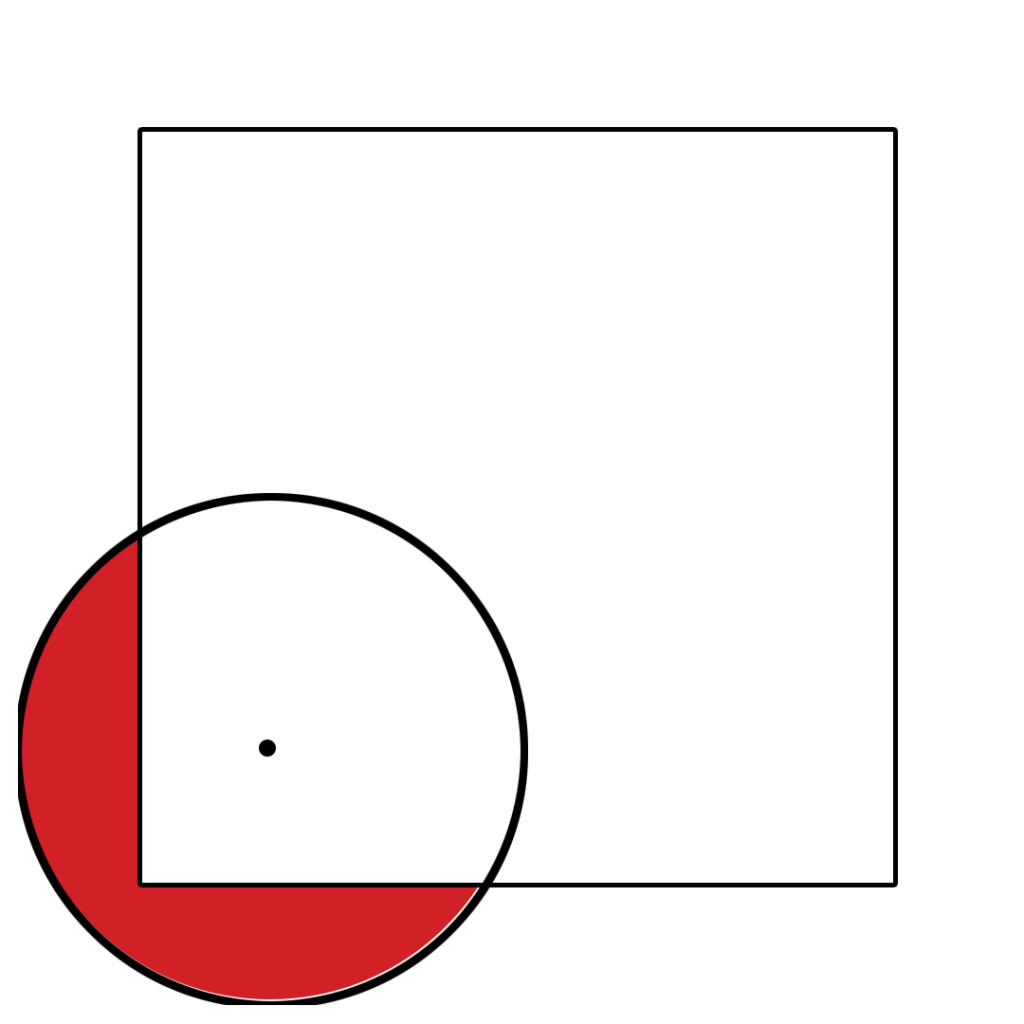
Habits in one corner of the sandbox don’t allow workable solutions on two sides of the “sandbox”, making the player less capable of adapting in certain ways.
Surrounding Player A’s dot is a large circle, symbolizing the variability and consistency of their shots. A significant portion of this circle spills over the sandbox’s boundaries, particularly along the bottom and left sides. This visualization illustrates that much of Player A’s natural variability fall outside the effective range of solutions—they literally and figuratively “miss” the sandbox of successful techniques.
Player A’s flat shot trajectory already reduces the margin for error, as a flatter arc has less chance of passing through the rim compared to a higher arc. When Player A inadvertently shoots even flatter than usual or adjusts their hand slightly more to the right (pushing the ball more left), these shots fall outside the viable solution space—outside our conceptual sandbox. This demonstrates a critical lack of adaptability; Player A’s shooting habits, deeply entrenched in one ineffective corner of the sandbox, leave little room to maneuver or explore other potentially successful techniques in that direction.
Enter Player B, whose shooting habits place them in a distinctly different predicament from Player A. Positioned in the upper right corner of our conceptual sandbox, Player B’s shooting dot is surrounded by a large circle, indicative of high variability, with significant portions extending beyond the sandbox’s upper and right boundaries. This spatial visualization provides insight into the nature of Player B’s shooting challenges.
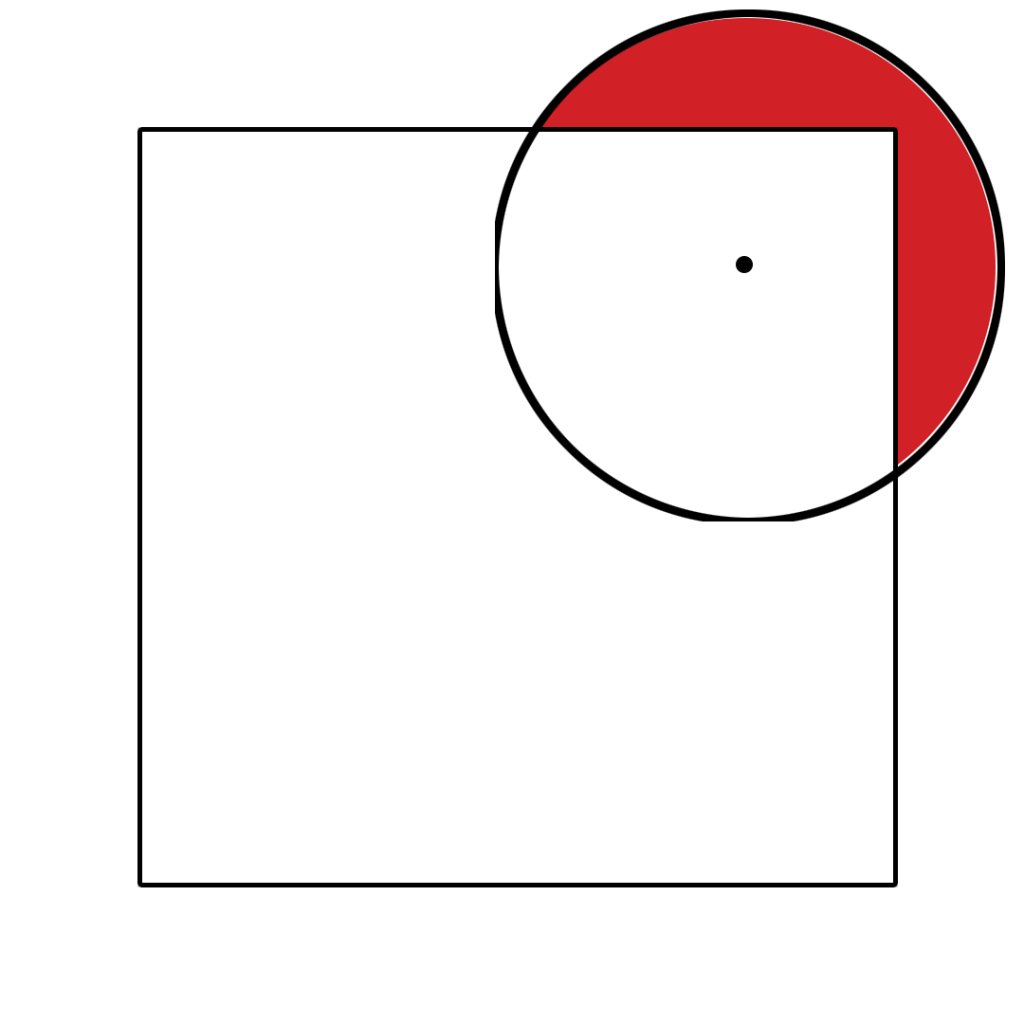
A representation of a player with habits that leaving no room for variability high or to the right.
Theoretical “Player B” tends to shoot the ball with an excessively high arc. While a high arc can be beneficial, Player B’s arc reaches a point where it hinders their ability to control distance and accuracy effectively. The extreme height of their shots means they are already pushing the upper limits of effective shooting techniques, leaving no room to explore variations that might involve even higher trajectories.
Compounding this issue is Player B’s tendency to push with their guide hand. This additional force, meant to compensate for the shooting hand being out of position, instead introduces a significant variable that can disrupt shot accuracy. When Player B pushes the intended amount with their guide hand, they manage to synchronize their guide hand with their shooting hand, achieving straighter shots. However, any excess push causes the ball to veer unexpectedly to the right. This variability is represented by the large circle around their dot, indicating that while they can achieve success, the consistency of that success is precarious.
The presence of Player B’s dot at the very edge of the sandbox, coupled with the large circle surrounding it, vividly illustrates how their current habits limit their ability to adapt or improve in certain directions. They cannot explore higher trajectories without risking even less control, and any additional rightward force from their guide hand only leads to more pronounced errors.
Traditional Coaching: Striving for Perfection in the Sandbox
In the quest for basketball excellence, traditional coaching methods have long emphasized the importance of achieving what is often seen as the ‘ideal’ shooting form. Coaches, armed with decades of observational data, typically advocate for a standardized approach where perfection in execution is the goal.
In the case of these two imaginary players, a traditional coaching model would attempt placing the player squarely in the middle of the sandbox—our metaphorical space for potential shooting success—where the room for error is equitably distributed in all directions, or reduce the size of the sandbox as much possible in pursuit of “perfection’.
Under this coaching paradigm, drills are meticulously designed to force players towards this central position, fostering a tight circle of variability around their shooting habits.
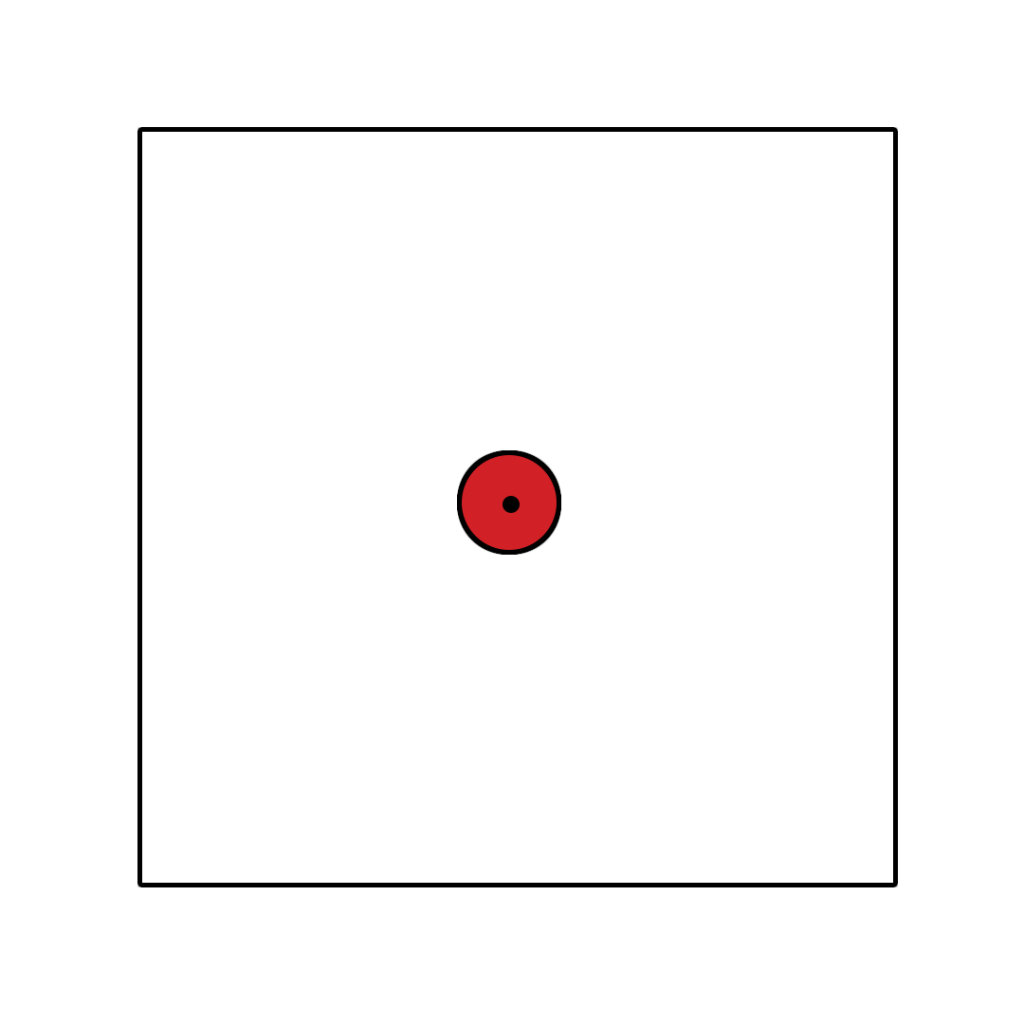
The perception of the role of the coach and practice in order to become skilled – execute the “perfect” motion with little variation, over and over again.
The logic is compelling: being in the middle of the sandbox maximizes a player’s adaptability and minimizes the risk of straying too far into ineffective techniques. Shrinking the size of the sandbox would mean that players would perform an optimal movement every time in practice. Coaches instruct explicitly, detailing each element of what they believe constitutes perfect form, from foot alignment and body posture to arm angle and follow-through.
The repeated execution of this ‘perfect’ form is seen as the path to becoming skilled. It is a process of rigorous repetition, aiming to minimize variation and maximize control. In this view, skill is equated with the ability to consistently replicate a specific, optimal motion, with little to no deviation—a tight circle in the sandbox.
Challenging the Ideal: The Reality of Skill in Basketball
However, this traditional approach, while seemingly logical, overlooks critical aspects of basketball shooting as a dynamic, open skill. The first limitation is the assumption of a universal ‘perfect’ shooting form. In reality, no single technique suits all players equally. Individual differences in anatomy, strength, past injuries, and even psychological factors mean that each player’s optimal shooting form is unique. Their ideal spot in the sandbox is not necessarily in the center but where it best complements their personal attributes.
Moreover, the notion that top shooters maintain minimal variability in their technique does not hold up under scrutiny. While there may be core similarities in how great shooters perform under controlled conditions, the game of basketball is anything but controlled. It is fluid and fast-paced, requiring players to adapt their shooting technique in real-time to accommodate defensive pressure, physical fatigue, and in-game context.
Lastly, the way this “perfect” form is practiced often limits adaptability. Players are put in oversimplified situations attempting to repeat a prescribed solution with as little variability as possible, then expected to be able to translate those skills to a dynamic, highly variable environment where “perfect” never happens.
Observations and data suggest that rather than having a tight circle of variability, the most successful shooters often possess a larger circle. This larger circle of variability in their motion does not indicate a lack of skill but a greater adaptability. These players have developed a repertoire of shooting solutions that they can call upon as needed, allowing them to adjust their technique effectively to the situation at hand.
Introducing the Constraint Led Approach to Basketball Shooting
In contrast to the traditional coaching model, the Constraint Led Approach (CLA) offers a more adaptive and personalized strategy for developing basketball shooting skills. Rather than prescribing a one-size-fits-all ‘perfect form’, CLA utilizes the principles of motor learning to encourage players to discover effective shooting techniques on their own. This method is particularly beneficial for players that have historically struggled to shoot the ball, and have failed to transfer any of the habits learned from a traditional method of coaching into game scenarios.
CLA is grounded in the concept of using constraints to guide learning. Instead of explicit instructions, coaches employing CLA might use implicit feedback, guided questions, and strategically designed drills that impose certain limitations or challenges. These constraints are not meant to restrict the player but to open up new possibilities for movement solutions, encouraging exploration across the wider sandbox.
For Player A, whose habitual shooting results in a flat trajectory and a tendency to miss to the left, a coach might set up exercises that exaggerate these issues. One such drill could involve encouraging the player to shoot with an exaggerated arc, pushing their attempts towards the upper boundaries of the sandbox. This not only highlights the contrast between their usual flat shots but also lets them feel the extremes of a higher arc. All too often players believe they are exploring the extremes based on their feeling, but are barely diverging from their normal place in the sandbox. What feels like a significant
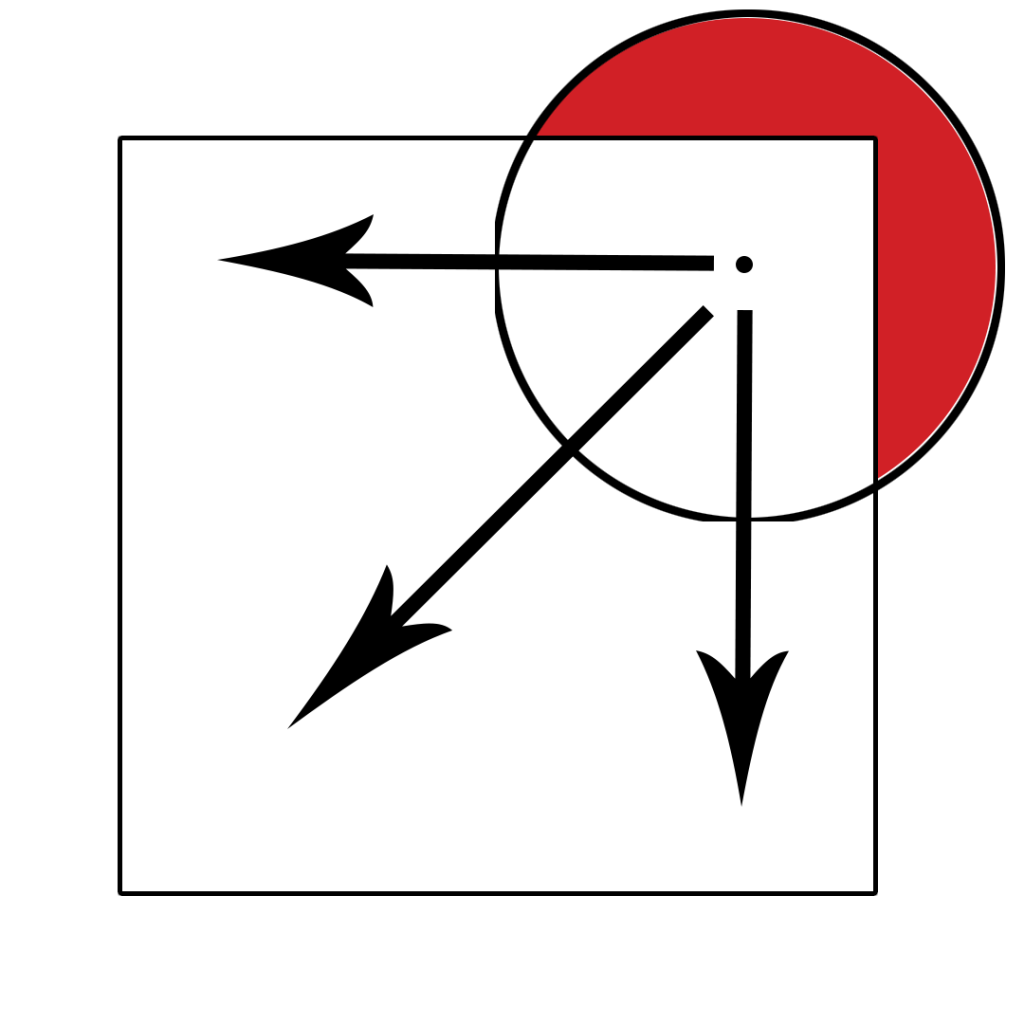
Using the CLA to explore movement solutions outside what might be perceived as “ideal” creates a more adaptable player in the long-run.
change to them, a dramatic increase in arc for example, is actually barely moving outside their habitual corner of the sandbox.
Similarly, to counterbalance the habitual leftward misses, the coach could introduce drills that make the player explore shooting with a bias to the right. These exercises might include drills that will over correct their shooting hand placement forcing an opposite “mistake” to their current habits, and encouraging exploration of the other side of the sandbox.
By experimenting with these varied conditions, Player A is guided to feel the true outer limits of effective shooting techniques within the sandbox, thereby learning where the middle might actually be. This exploration helps them to recalibrate their internal sense of where the middle—the most effective and adaptable shooting form for them—truly lies. In other words, forcing players into the middle of square with a traditional approach doesn’t give players context of how much they are able to adapt their skill, whereas by encouraging them to explore the other corners of the sandbox players gain knowledge of how much adaptability is possible, while also getting a sense of where the middle might be for them.
The real strength of the Constraint Led Approach lies in its enhancement of long-term adaptability. By encouraging players to explore a range of shooting styles and solutions, CLA helps them develop a more comprehensive set of skills. This approach ensures that players are not just mechanically repeating what they are told but are actively engaging with the process of skill acquisition, discovering what works best in varying contexts and under different pressures.
Through CLA, coaches help players expand their circle within the sandbox, increasing their potential for successful and adaptable shots. This method fosters a deeper, more intuitive understanding of shooting mechanics, tailored to the individual’s unique capabilities and challenges.
Redefining Skill in Basketball Shooting
A common misconception in basketball is that skill, particularly in shooting, equates to the ability to execute a ‘perfect’ form with robotic consistency. However, this perspective fails to capture the essence of what it truly means to be skilled. Skill in basketball shooting is not about rigidly replicating a single ideal form but about mastering adaptability and flexibility in one’s techniques.
The notion of a perfect middle of the sandbox, where one universal shooting technique fits all, is a flawed concept. No two shooters are exactly alike—variations in body type, strength, developmental background, and even cognitive processing mean that each player will naturally develop their own shooting style. While it’s true that physics governs the basics of a successful shot, leading to some commonalities among shooters, the application of these principles varies with each individual. What results is not a single optimal point in the sandbox but multiple viable centers where players can find success.
The hallmark of a truly skilled shooter is not how tightly they can confine their movements to a small area of variability. Rather, skill is demonstrated through the ability to adapt one’s shooting technique to the demands of the game situation. Consider the example of Steph Curry, renowned not only for his precision but also for his ability to make shots under a variety of challenging circumstances. Curry’s skill is not manifested in a tight circle at the exact center of the sandbox. Instead, he operates with a larger circle, skillfully navigating near the middle but capable of adapting his shot across a wide range of situations.
This adaptability allows elite shooters to utilize their technical skills flexibly, adjusting their shot in real-time to counteract defensive pressure, adjust for physical fatigue, or capitalize on fleeting opportunities. Their large circles within the sandbox are not indicative of inconsistency but rather of a profound mastery over the shot, enabling them to fill up as much of the sandbox as possible with effective solutions.
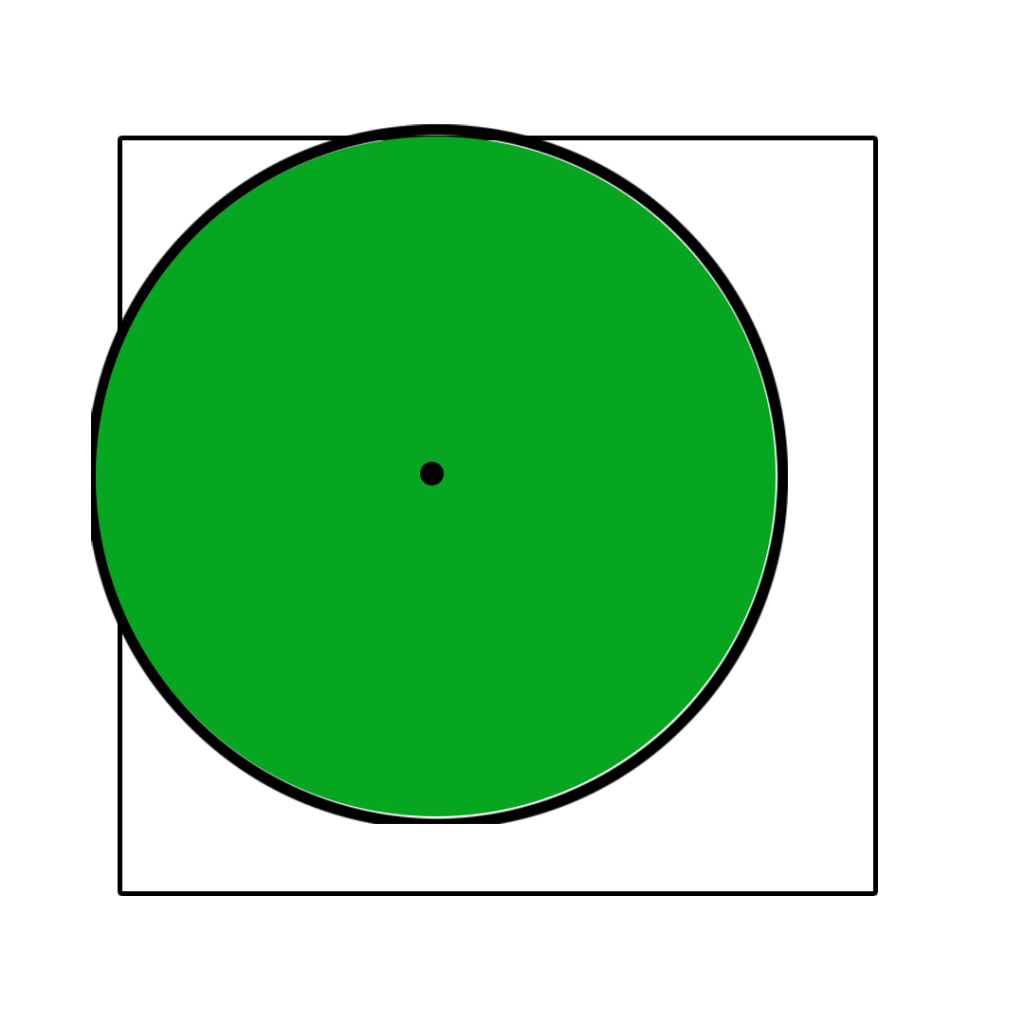
A truly skilled player will have shooting form allows for maximum variability in all directions based on the demands of the game, not overly simplified practice.
Conclusion: Redefining Skill and Coaching in Basketball
In this more dynamic view of skill acquisition, the role of the coach is transformed. Coaches should not be seen merely as instructors of perfect form but as guides who facilitate players’ exploration of different movement solutions. Their task is to help players navigate the sandbox of potential techniques, encouraging them to the most effective solutions, but also push the boundaries of their current capabilities and explore the full range of alternate solutions. This process involves not only directing players towards effective techniques but also helping them understand why some approaches might be less effective, thereby building a deeper, more adaptable understanding of shooting.
This does not imply that coaching should be hands-off or that players should shoot in any manner they choose without guidance. Effective coaching involves a balanced approach: providing feedback, setting constraints that encourage players to explore, and remaining open to the variety of solutions that different players might discover. Coaches guide players towards effective solutions not by dictating every action but by creating learning environments that highlight the consequences of different techniques, fostering insight and adaptability.
Recognizing that there are many potential pathways to effective shooting in a basketball game (as opposed to neatly organized and controlled drills) underscores the importance of adaptability in skill acquisition. This understanding encourages coaches and players alike to remain open-minded, understanding that the diversity of successful techniques is not just acceptable but beneficial. It allows players to adapt their skills to the specific demands of game situations, which are as varied as the players themselves.
By embracing a broader definition of what it means to be skilled and acknowledging the pivotal role of adaptability in basketball shooting, we can foster a more inclusive and effective approach to coaching. This shift not only enhances individual player development but also enriches the collective expertise within the sport, promoting a culture of continuous learning and adaptation.

